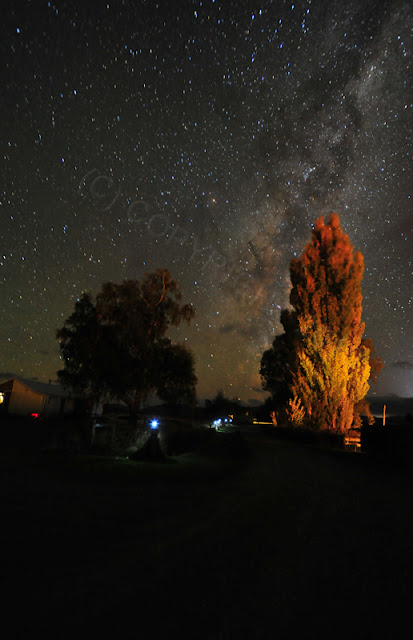Welcome to the "club"

Actually its not really that complicated. Don't expect magazine- quality pictures with basic equipment, but even a simple point-and-shoot (not to mention a fantastic Canon 7D) can take star photos enough to identify constellations without any special equipment except a tripod.
Basically the shorter your focal length (i.e. wider shot), the longer you can expose for before the stars start to move in the sky. So grab your widest lens (doesn't have to be a "premium" one),
1. Use a stable tripod (or a table and bean-bag/pillow/pile of books if you don't have a tripod),
2. Align it to the rough area of sky you want to snap (make sure no clouds or moon!),
3. MANUAL FOCUS,
4. Manual exposure mode (so you can control everything)
5. Set timer delay (important! To prevent your pressing action from shaking the photo)
then fire away!

If you're using a non-premium lens, do stop it down a bit so the edges are reasonably sharp. Try 30s, 15s, 8s etc etc exposures until you hit the longest exposure you can get with sharp stars.
Using your camera's long exposure noise reduction will result in a pretty nice picture already, unless you're a pixel peeper

If you want a bit more advanced, then take maybe 30-100 pics of the same spot of sky (depending on how much time you have) and stack it in a program called "Deep Sky Stacker" (freeware) which will reduce your noise and increase some of the faint signals (faint stars)
That will definitely do the stars

If you want to get more advanceed then the costs and complexity add up but this is a great and simple start

To show you what's possible with just a DSLR and non-pro lenses on a simple (actually rather unstable, cheapo) tripod:
This was my first pic, taken in New Zealand, using a Tamrom 18mm lens and 1min exposure on a simple photo tripod

And this was my first shot processed with DSS, a series of 5 sec exposures using a 50mm lens taken in light polluted Singapore, showing the constellation of Scorpio, part of Sagittarius, M6 and M7 open clusters.

Hope it helps!

